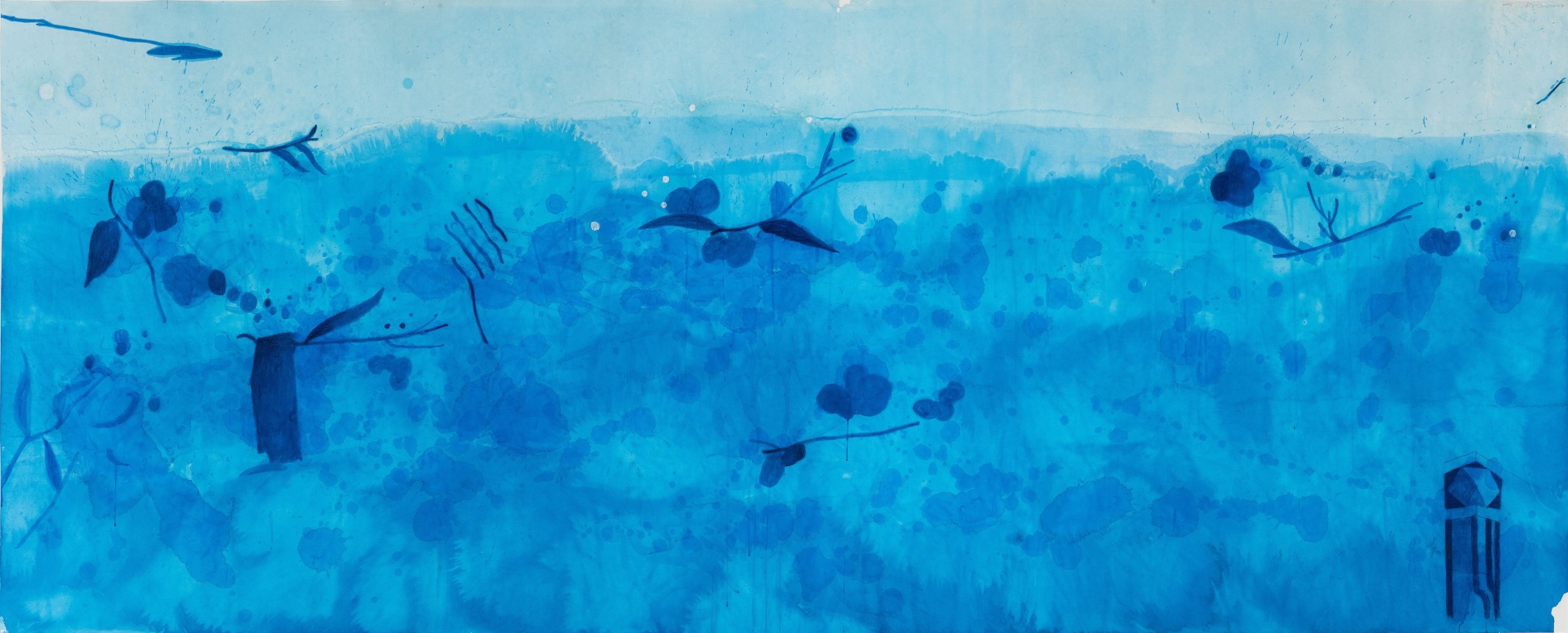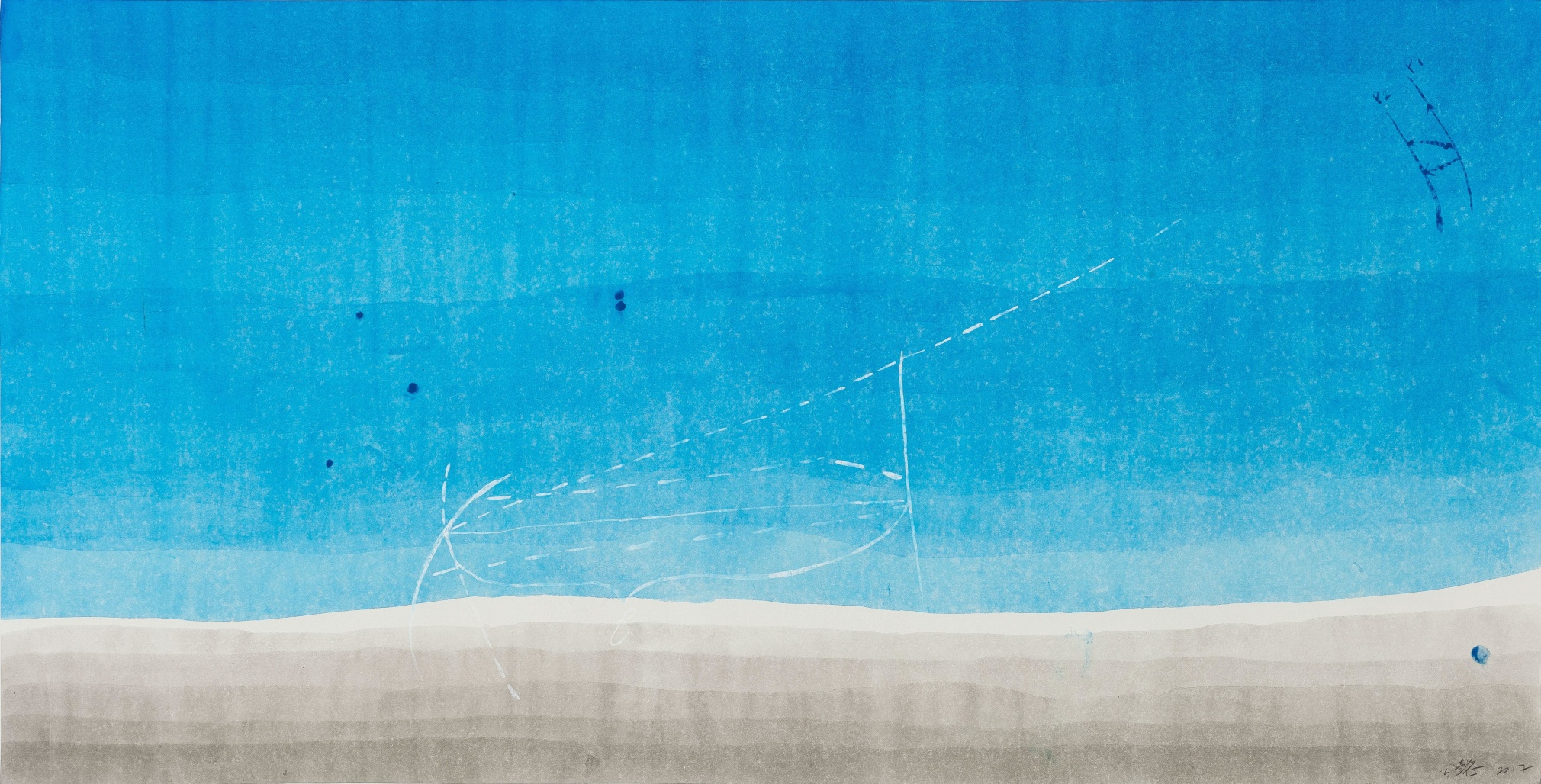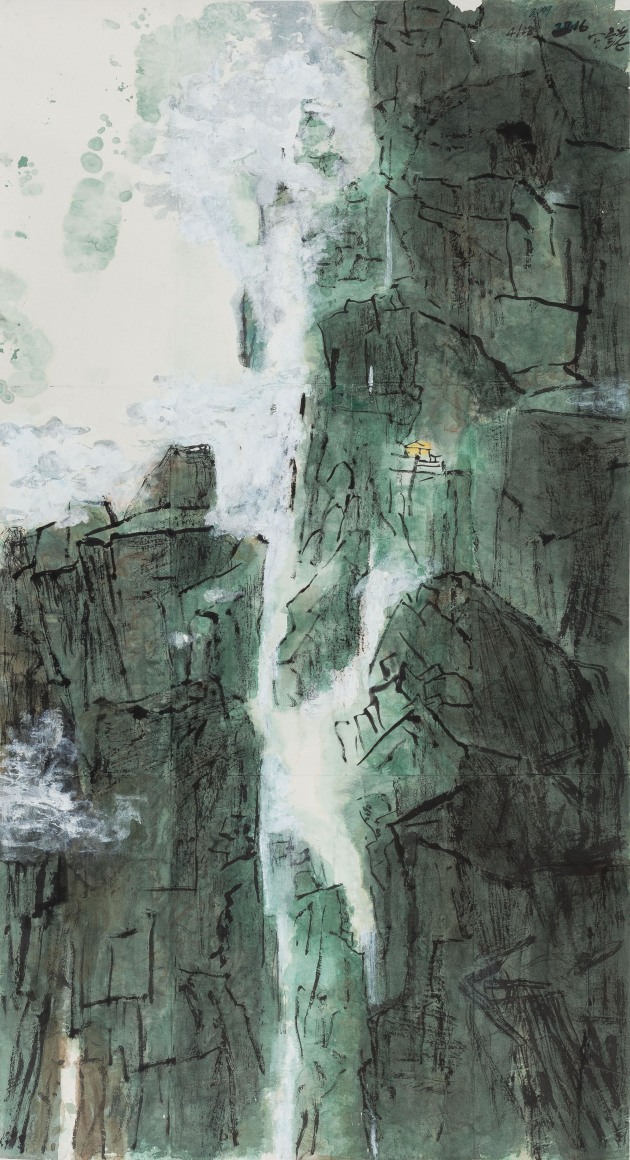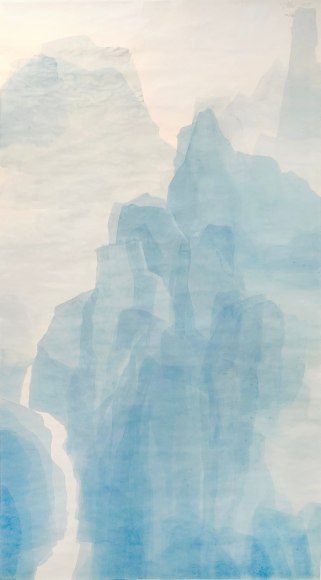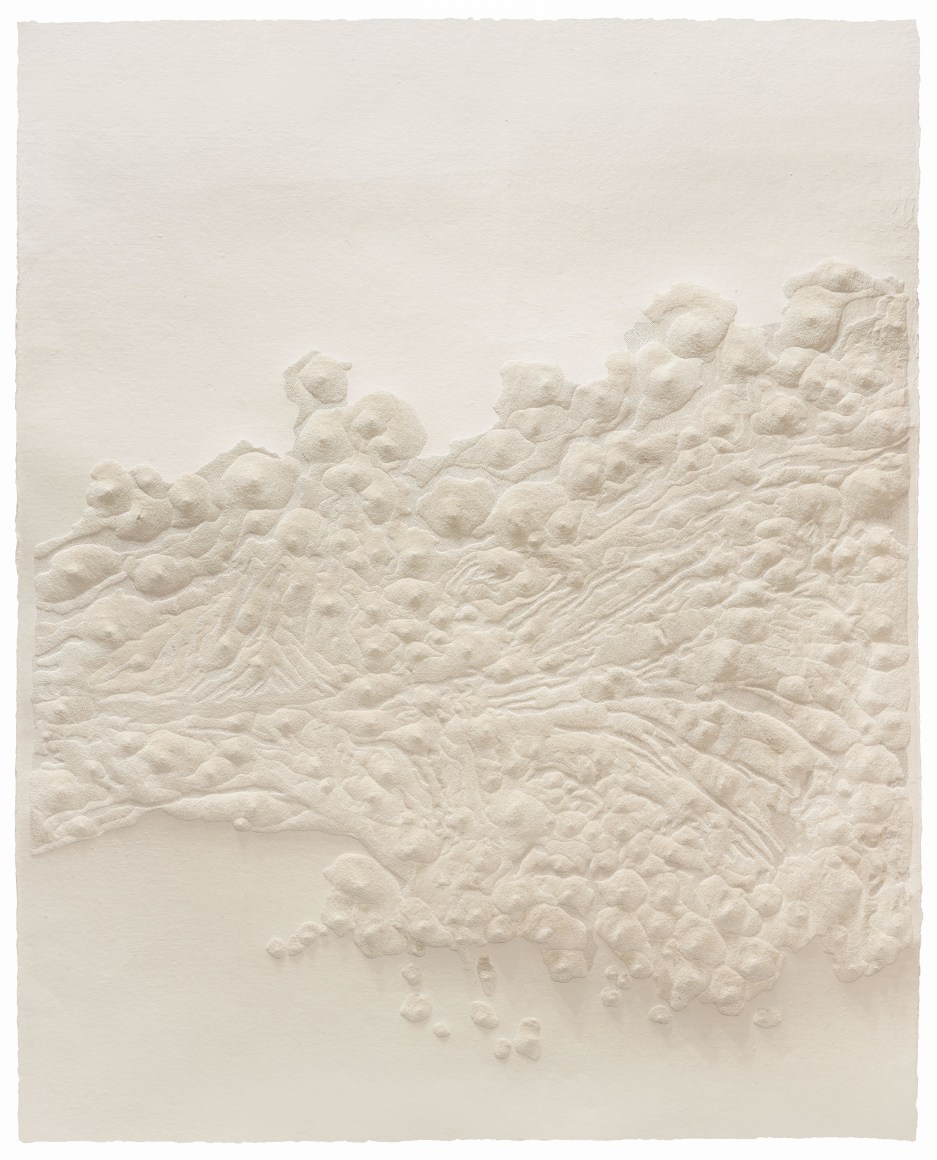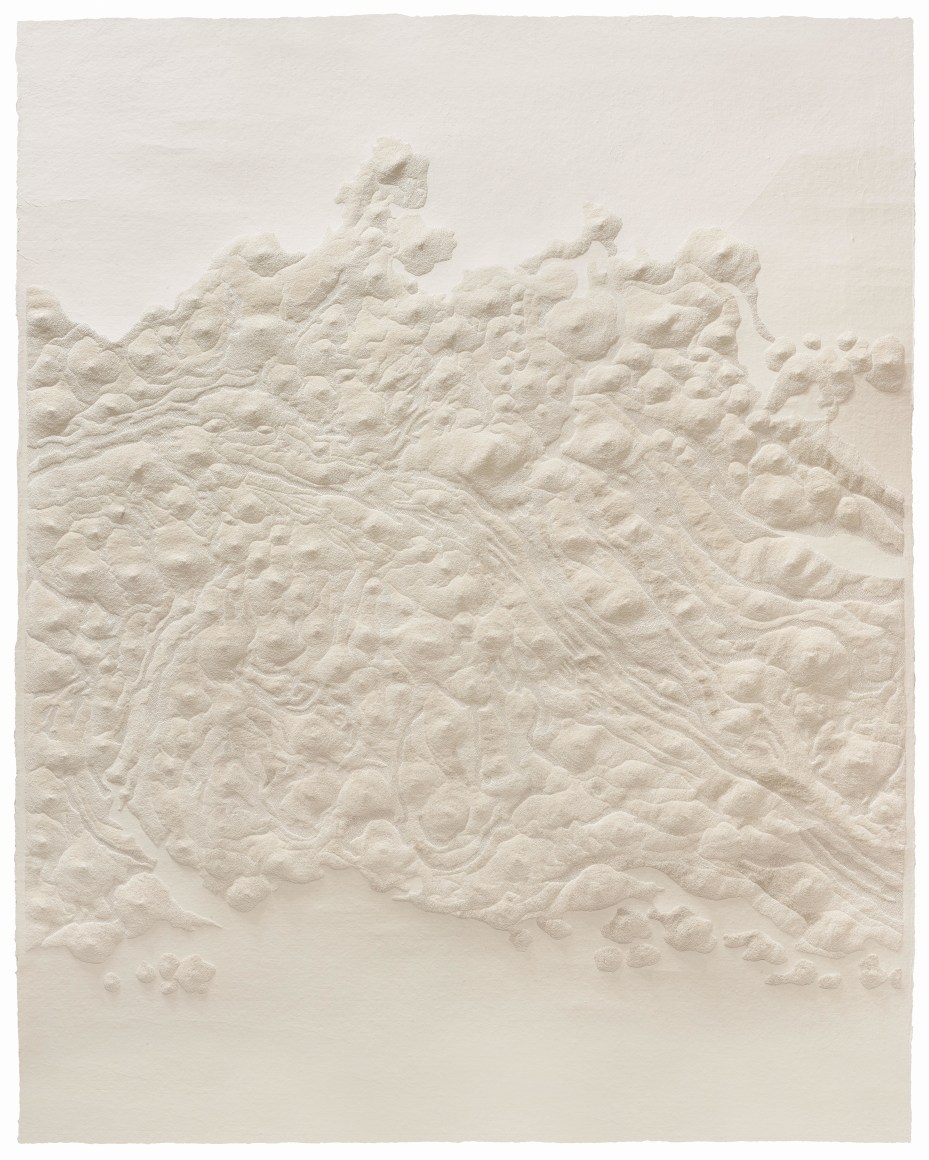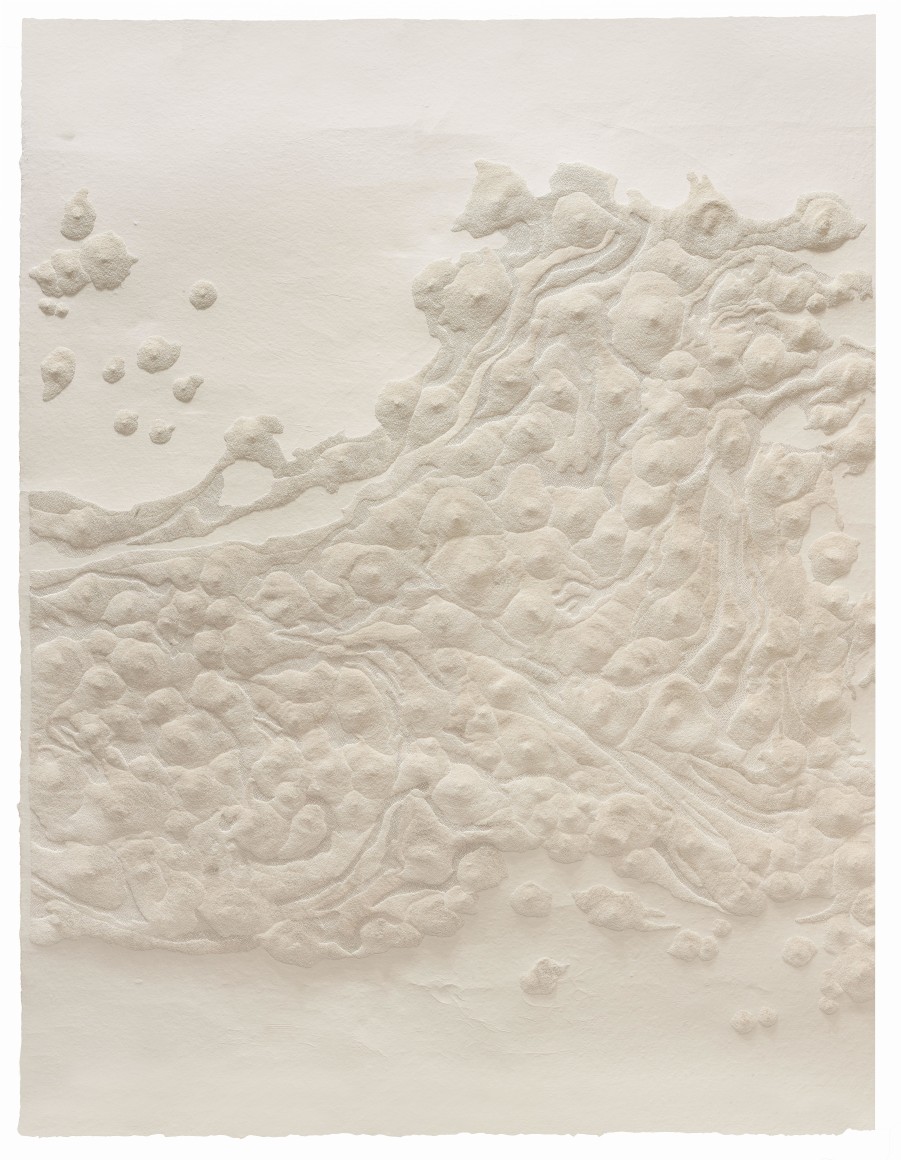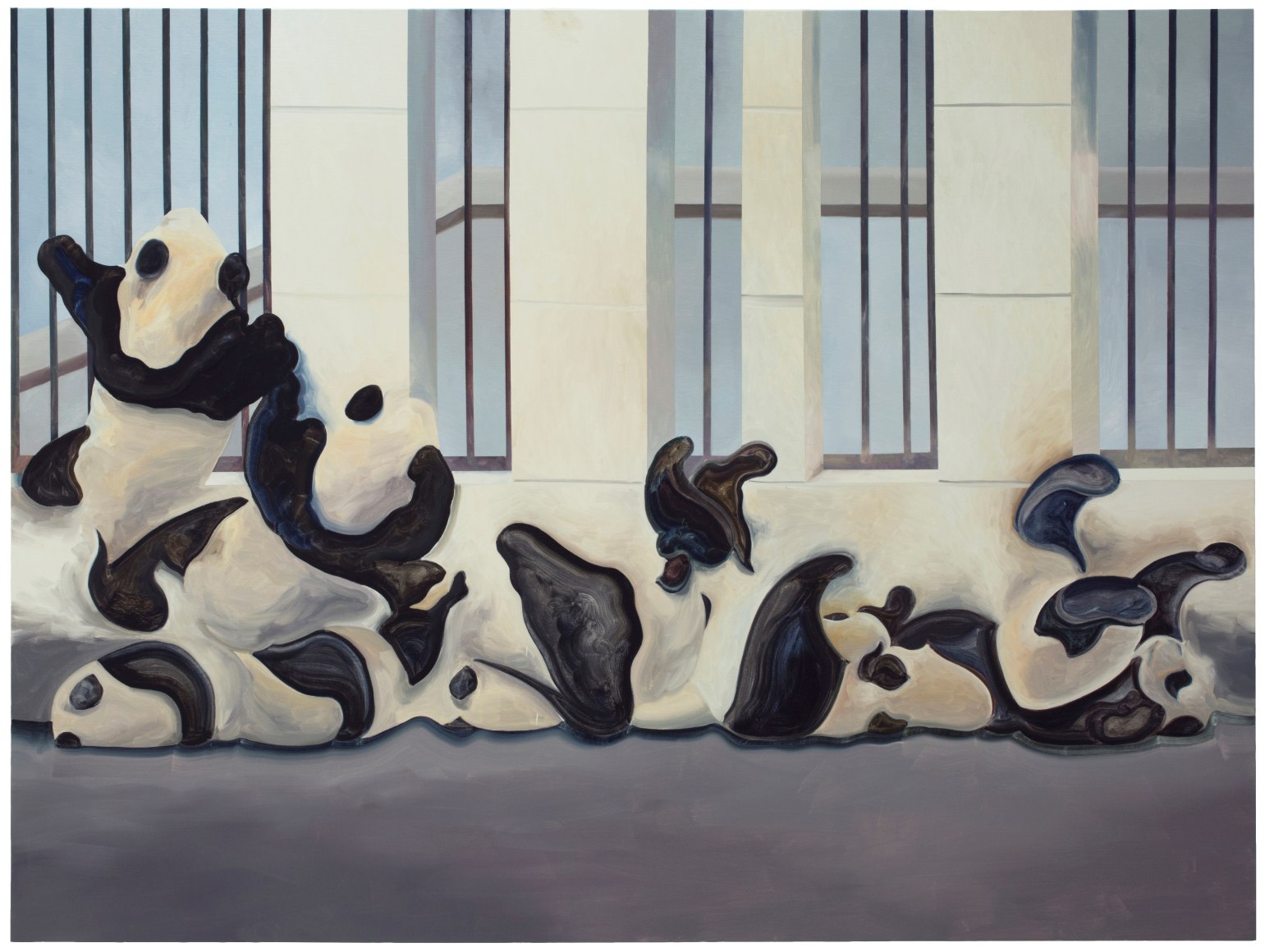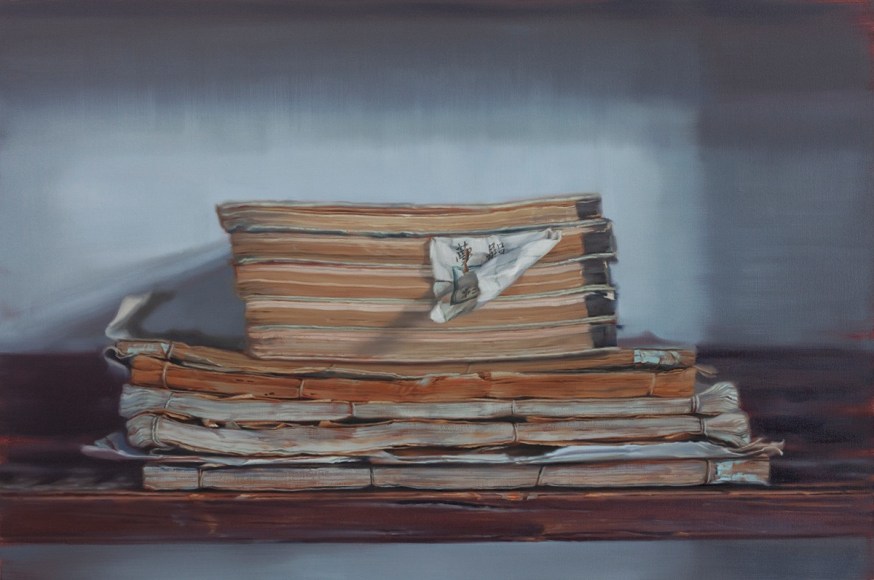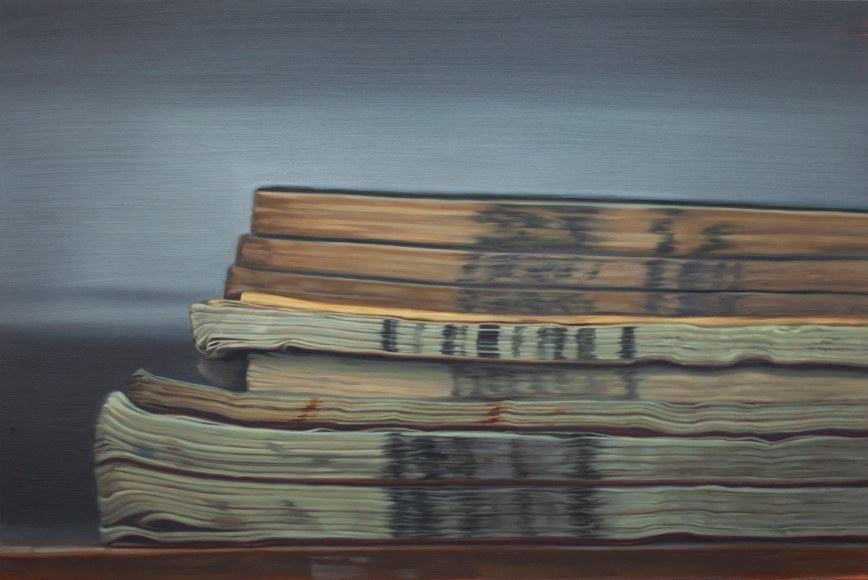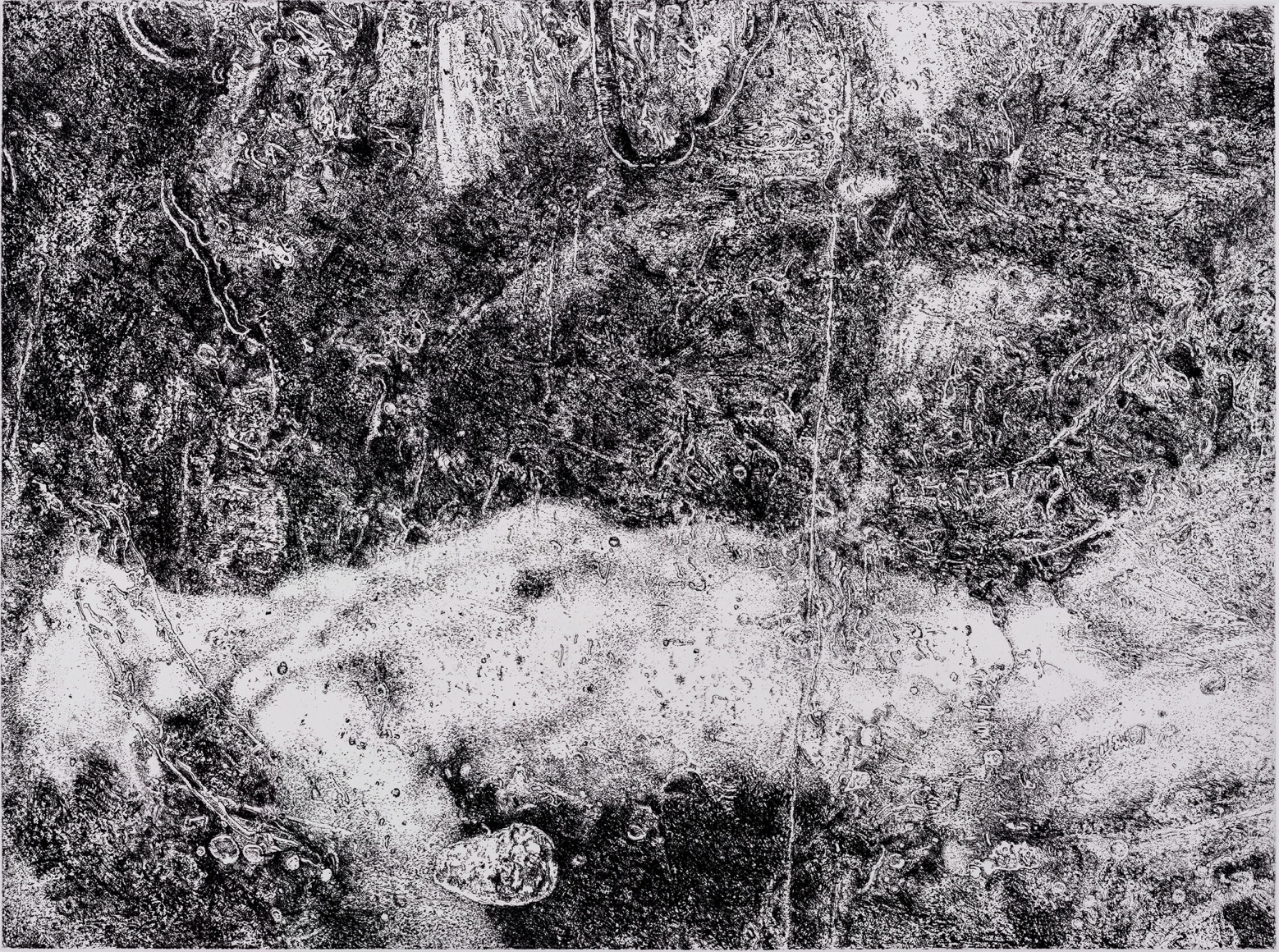Chambers Fine Art is pleased to present at Art Basel Hong Kong 2019 new works by Wang Gongyi, Shi Chong, Guo Hongwei, and Li Qing. Widely different in background and approach, the four artists are representative of the stylistic diversity of contemporary Chinese art today.
Presented the main section of the booth will be a solo exhibition of Wang Gongyi’s Winsor Blue series: serene and sparse watercolors that depict imagined landscapes, each an investigation of light though rhythmic repetition and subtle changes of tonality using a specific blue pigment. Wang Gongyi was born in Tianjin, China in 1946, received her master’s degree from the Printmaking Department at Zhejiang Academy of Fine Arts (now China Academy of Art) in 1980, and stayed on to teach after graduation. In 1986, she was invited by the French Ministry of Culture to study art and art education in France, and to participate in exhibitions. She worked as an associate professor in the Department of Printmaking at the Zhejiang Academy starting in 1992, and later moved to the United States in 2001, where she lives and works today.
The other sections of the booth will feature works by Shi Chong, Guo Hongwei, and Li Qing. Shi Chong was born in Huangshi of Hubei province, and graduated in 1987 from the Oil Painting Department at the Hubei Academy of Fine Arts. Shi was part of the “new generation” of painters who emerged in the 1980s, gaining wide recognition in China for his photo-realist paintings. As his work developed alongside the avant-garde movement of the 1990s the human body - manipulated and altered - became the principal feature of Shi's painting. Often using live models in laboriously staged environments, Shi executes intricately planned paintings of nudes submerged in water, or partially hidden in shadow.
Born in Sichuan Province in 1982, Guo Hongwei graduated from the Sichuan Fine Arts Institute, Chongqing in 2002 and currently lives and works in Beijing. Widely admired for the superb technique of his watercolors, many based on botanical subjects, Guo has recently returned to painting on canvas in which the images emerge and are transformed by his unorthodox combination of acrylic and varnish. He has emerged as one of China’s outstanding young painters.
Li Qing was born in Huzhou, Zhejiang, and currently lives and works in Hangzhou and Shanghai. Li Qing’s art practices encompass a variety of media; primarily he is an oil painter, but his work includes video, photography and installation. His ongoing Window series (2013-) borrows the trompe l’oeil technique, combining old wooden window frames with paintings of colonial architecture, street scenes, and neon lights behind glass.

